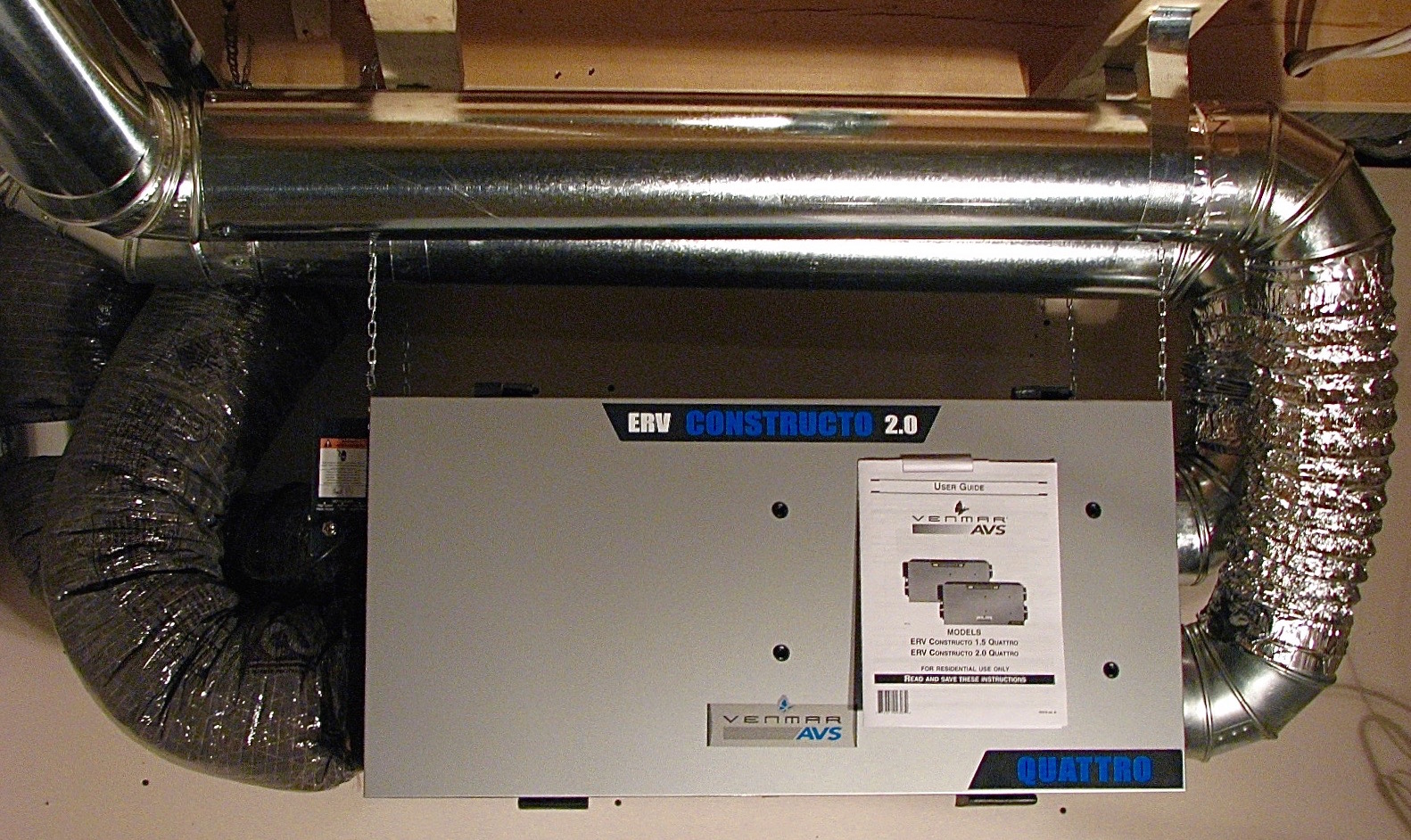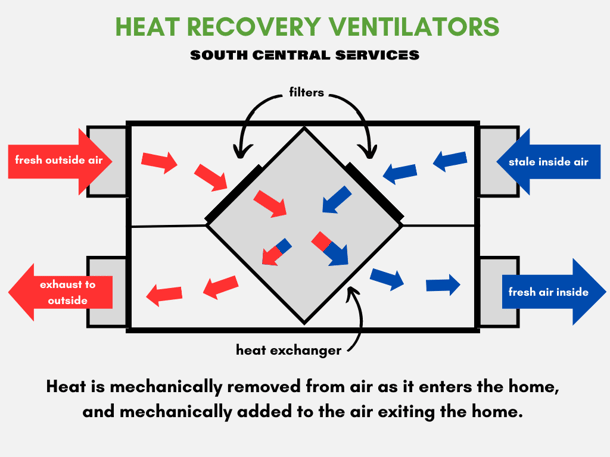HRV Explained: Everything You Should Know
Introducing the Secret Benefits and Uses of Heat Recovery Ventilation in Lasting Design
Heat Recovery Ventilation (HRV) systems play an essential duty in sustainable style. They facilitate a constant exchange of stale interior air with fresh outside air, significantly boosting interior air quality. HRVs contribute to power efficiency by recovering warm from exhausted air, which can reduce energy prices. Comprehending the diverse advantages and applications of HRVs exposes their value in modern-day design. What various other advantages do these systems supply in the search of sustainability?
Comprehending Heat Recovery Ventilation Equipments
Heat recovery ventilation (HRV) systems are designed to boost indoor air high quality while decreasing energy loss. These systems make use of a mechanical ventilation technique to exchange stagnant indoor air with fresh outside air, ensuring a constant supply of tidy air. By capturing heat from the exhaust air, HRVs precondition inbound air, minimizing the demand on heating and cooling down systems. This procedure not only enhances thermal convenience yet likewise adds to power effectiveness in domestic and industrial buildings. Furthermore, HRV systems aid control moisture degrees and decrease interior pollutants, advertising a healthier living atmosphere. Their strategic implementation is crucial for accomplishing lasting layout objectives, as they use an equilibrium in between power preservation and occupant well-being.
Exactly How HRV Systems Work
While numerous may be familiar with ventilation systems, comprehending just how warm healing ventilation (HRV) systems operate is necessary for appreciating their advantages. HRV systems operate by trading stagnant indoor air with fresh outdoor air while moving warmth in between the two streams. This process occurs in a warmth exchanger, where warm from the outbound air warms the incoming air throughout colder months, reducing energy loss. Alternatively, in warmer months, the system can cool inbound air utilizing the cooler outgoing air. HRVs are outfitted with followers to assist in airflow and filters to remove particulates, making sure a continuous, well balanced ventilation process. This ingenious layout not only enhances power effectiveness but likewise adds to preserving a comfy interior atmosphere.
Enhancing Indoor Air Top Quality
Interior air high quality can significantly influence health and wellness and wellness, making effective air flow crucial in contemporary homes. Heat Recovery Ventilation (HRV) systems play a necessary function in maintaining interior air quality by continually exchanging stale interior air with fresh outside air. This process not just reduces air-borne contaminants yet likewise minimizes moisture levels, which can bring about mold development and breathing concerns. HRV systems filter incoming air, getting rid of irritants and particulates, therefore supplying a healthier living atmosphere. Additionally, these systems help eliminate odors and unpredictable natural substances (VOCs) frequently discovered in household products. By making sure a constant circulation of clean air, HRV systems add to a total enhanced indoor ambience, advertising comfort and well-being for passengers.
Power Efficiency and Expense Financial Savings
Power efficiency sticks out as a substantial benefit of Heat Recovery Ventilation (HRV) systems. By capturing and reusing the warm from exhausted indoor air, HRVs lessen the power needed for heating incoming fresh air, bring about minimized power usage. This performance translates right into lower utility costs, providing significant expense savings for homeowners and services alike. In addition, HRV systems often qualify for energy efficiency rewards and discounts, further enhancing their financial appeal. In time, the preliminary financial investment in HRV technology can result in a positive roi through lowered power costs. The integration of HRV systems not only advertises sustainable design yet additionally gives a practical remedy for attaining long-lasting power financial savings and monetary advantages.
Environmental Advantages of HRV

A plethora of ecological advantages develops from the application of Heat Recovery Ventilation (HRV) systems. By effectively transferring warm from exhaust air to inbound fresh air, HRVs significantly decrease the energy needed for home heating and cooling rooms. This energy effectiveness equates to lower greenhouse gas discharges, adding to a decline in the total carbon impact of buildings. In addition, HRV systems enhance interior air high quality by continually flowing fresh air, thereby minimizing the focus of interior contaminants and allergens. The decrease in energy consumption help in conserving all-natural resources, making HRVs an important part of lasting design. In general, the ecological advantages of HRVs play an important function in promoting a much healthier world and promoting green building methods.
Versatile Applications in Modern Style
Heat recovery ventilation (HRV) systems are increasingly being incorporated right into both household and business architectural jobs. In household settings, HRVs boost interior air top quality while making the most of power efficiency. In industrial rooms, these systems maximize ventilation methods, showing their versatility in contemporary building applications.
Residential Projects Assimilation
While modern architecture increasingly highlights sustainability, the integration of warmth recovery ventilation systems in domestic jobs has arised as a practical service for improving interior air high quality and power performance. These systems successfully move heat from exhaust air to incoming fresh air, lessening power loss and minimizing home heating or cooling down needs. In new builds and retrofits alike, warm healing air flow can be flawlessly included, giving home owners with a much healthier living setting while decreasing energy costs. Additionally, with raising recognition of environmental impacts, even more engineers and building contractors are identifying the lasting benefits of these systems. Consequently, heat recuperation air flow has become an essential component of lasting residential design, showcasing versatility and dedication to environment-friendly methods.
Commercial Spaces Optimization
As modern-day industrial rooms progress to fulfill the needs of sustainability and efficiency, the execution of warm recovery ventilation systems emerges as a key method for enhancing interior atmospheres. These systems promote the exchange of stale interior air with fresh outdoor air while redeeming heat, significantly decreasing energy consumption. This not only boosts convenience for occupants yet likewise helps in reducing operational expenses. Functional applications can be observed in workplaces, retail rooms, and academic organizations, where air quality and temperature control are vital. In addition, integrating warm healing ventilation lines up with environment-friendly building accreditations, better promoting environmental duty. Ultimately, adopting such systems in industrial design not just adds to sustainability goals however additionally fosters healthier, much more efficient spaces for customers.
Integrating HRV Into Sustainable Layout Practices
Integrating warmth healing ventilation (HRV) systems right into sustainable style methods uses considerable advantages in power performance and interior air high quality. By using HRV, designers can develop cost-efficient solutions that not just reduce power intake yet additionally boost the general comfort of indoor atmospheres. This positioning with sustainability goals positions HRV as a crucial component in modern architectural strategies.
Energy Effectiveness Enhancement
By including warm healing air flow (HRV) systems into lasting layout techniques, engineers and home builders can substantially improve power efficiency in modern-day constructions. HRV systems work by recording warm from outbound stagnant air see this here and transferring it to incoming fresh air, reducing the energy needed for heating or cooling interior areas. This anonymous procedure not only minimizes reliance on conventional HVAC systems yet also reduces general energy intake. In enhancement, HRV systems can aid preserve a constant interior temperature, lowering peak energy demands. By integrating these systems, buildings can achieve considerable decreases in energy expenses and carbon footprints, straightening with sustainability objectives. Eventually, HRV innovation stands for a practical remedy for enhancing power performance in the constructed atmosphere, promoting more accountable source usage.
Indoor Air Top Quality Enhancement
How can warm healing air flow (HRV) systems contribute to remarkable indoor air top quality in modern buildings? HRV systems effectively exchange stale interior air with fresh outside air while recovering heat, lessening temperature level changes. This process decreases the focus of interior toxins, such as unstable organic substances (VOCs), allergens, and dampness, which can weaken air quality and effect owner health and wellness. By keeping excellent moisture degrees and making sure a constant supply of clean air, HRVs assist create a healthier interior setting. On top of that, these systems can be incorporated into lasting style practices, advertising energy performance alongside boosted air top quality. HRV Heat Recovery Ventilation. HRV innovation plays a crucial role in advancing overall occupant convenience and wellness in contemporary building styles.
Economical Style Solutions

Regularly Asked Questions
What Maintenance Is Needed for Heat Recovery Ventilation Solutions?

Maintenance for heat healing ventilation systems usually includes regular filter replacements, cleansing of warm exchangers, assessment of followers and ducts, and guaranteeing proper water drainage. These tasks aid keep effectiveness and prolong the system's lifespan in time.
Can HRV Equipments Be Mounted in Existing Structures?
Heat recovery ventilation systems can indeed be mounted in existing structures. HRV Heat Recovery Ventilation. Retrofitting Extra resources requires mindful planning and analysis of the building's design, ensuring compatibility with current systems while maximizing power effectiveness and interior air top quality
How Do HRV Equipment Effect Noise Degrees Indoors?
HRV systems can affect indoor sound degrees by presenting noise from external sources through ventilation. Nevertheless, top notch installments commonly integrate sound-dampening functions, reducing sound effect while offering effective air exchange and maintaining convenience indoors.
Are There Any Type Of Disadvantages to Utilizing HRV Systems?
The downsides of utilizing HRV systems include potential high first costs, maintenance difficulties, and the opportunity of reduced interior air quality if filters are sporadically changed, which could cause issues with moisture degrees.
Just how Do I Pick the Right HRV System for My Needs?
Choosing the appropriate warm recuperation ventilation system involves reviewing details requirements, such as developing dimension, climate, and energy performance goals. Furthermore, evaluating system attributes, setup requirements, and upkeep considerations is crucial for peak efficiency and contentment.